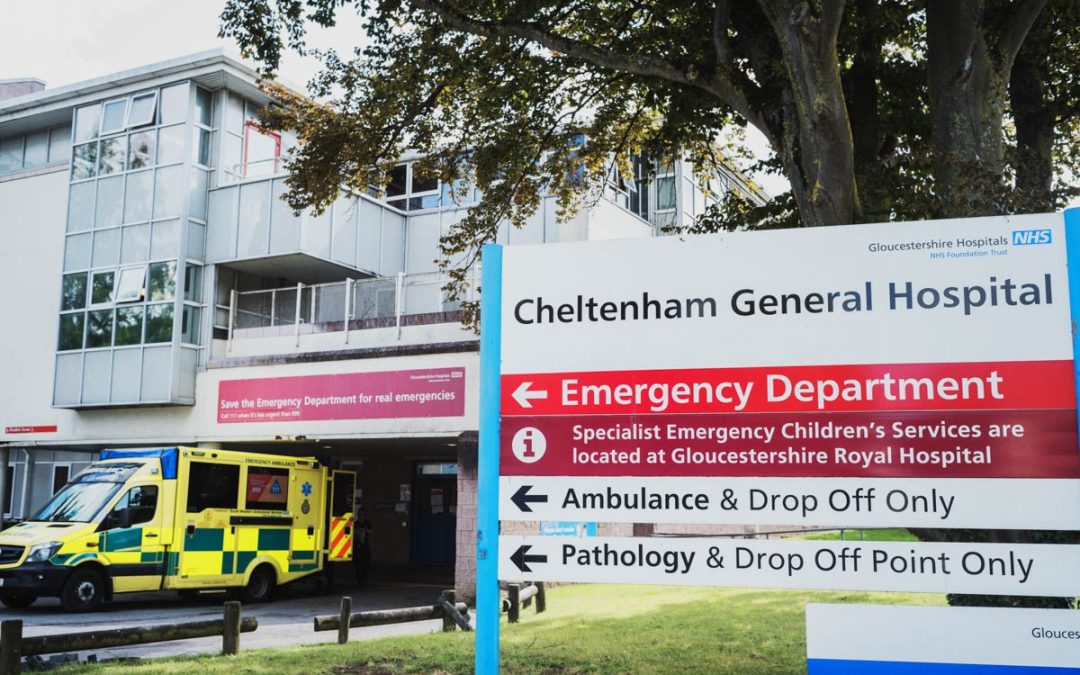Within the proposals, set out by the local Gloucestershire NHS Foundation Trust, to downgrade Cheltenham General’s Full “Type 1” A&E department to a “Type 3” Urgent Treatment Centre (UTC)*, the local NHS suggests that the individual patients will be personally responsible for deciding whether their symptoms are ‘urgent’ enough to book an appointment at the new UTC in Cheltenham or a more serious ‘emergency’ requiring attendance at a Type 1 A&E Department or a call to 999 for an ambulance.
A Senior Hospital Doctor with many years on-call experience, explains to REACH his views on such a suggestion:
“This separation of emergencies into ‘urgent’ and ’emergency’ is arbitrary and meaningless in practice. It is terribly convenient as a mechanism for getting whatever answer you want, as it depends entirely on how you choose to categorise any particular event. An example of an ‘urgent’ case is someone with a bowel obstruction (blockage) but no signs of strangulation of the bowel (dead bowel); a person with dead or dying bowel is an altogether more ‘urgent’ problem. There is no clear dividing line between ‘urgent’ and ‘emergency’, as these definitions try to suggest. Even if you accept these terms, they are opposite ends of a continuous spectrum of risk.
Speaking as a Senior Hospital Doctor with many years of on-call experience, and even more if my non-consultant years are taken into account, I can say with some authority that attempting to distinguish between the two categories at the non-specialist level, let alone as a patient, is not possible. Two cases with similar symptoms, signs, and final diagnosis, when assessed by an experienced team of doctors, can conclude that case A is in need of ‘urgent’ attention, whereas case B needs ‘urgent’ attention of a different magnitude. Put another way, case A might be best managed expeditiously, the surgery being undertaken within say, 24 hours**, and case B needs such urgent attention that everything must stop and make way for it immediately.
There is no getting away from the fact that it takes considerable experience to make these calls and it is fanciful to think that anyone other than a proper specialist medical team led by a consultant can do this accurately. Any less experienced doctor or ‘health professional’ trying to make these decisions imperils not just the patient but themselves as well, and in my opinion they would be mad to try.
This categorisation of ‘urgent’ and ‘emergency’ has no meaning in practice other than to those senior doctors, who have the experience to make such assessments.
The local NHS Trust has managed to craft two terms that are vague with absolutely no sensible boundary between them. I defy 99 out of 100 members of the public to confidently establish the difference between:
- Urgent care – an illness or injury that requires urgent attention i.e. generally needs to be assessed and dealt with on the day, but is not a life threatening situation.
- Emergency care – is when you have a life or limb threatening illness or injury which requires rapid and intensive treatment.
For example; “I have a terrible, excruciating pain in my stomach that has me screaming with agony”. Do I need ‘urgent’ or ‘emergency’ treatment? If my Appendix has burst I need Emergency treatment but if I have trapped wind, I need Urgent treatment. You’ll only know if you go to see a skilled practitioner, who has the diagnostic tools at his/her disposal to determine which the case is.”
*A Type 1 Emergency Department is a fully functional A&E Department led by specialist A&E consultants with a team of doctors and nurses. A Type 3 Emergency Department is an Urgent Treatment Centre or Minor Injuries Unit, usually staffed by GPs and/or nurses.
**There is nothing magic about ’24 hours’; this figure is used solely as an example. Furthermore, a patient who might initially be deemed to fall into the ‘urgent’ category might deteriorate so quickly during the following few hours that they become ’emergency’, as in case B.
HAVE YOUR SAY:
If you would like to have your say about the plans to downgrade Cheltenham General’s Type 1 A&E to a Type 3 UTC, please complete our survey on the link below. We have produced this in response to the NHS Trust’s ‘Fit for the Future’ engagement document, which is open until 15th October. All completed responses will be forwarded on to the Trust to ensure the local community’s voice is heard.
Survey link: https://www.reachnow.org.uk/reach-launch-fit-for-the-future-survey/
If you would like to support REACH’s campaign further and donate to the ongoing marketing and publicity costs, please click here to find out how: https://www.reachnow.org.uk/donate-to-reach/

